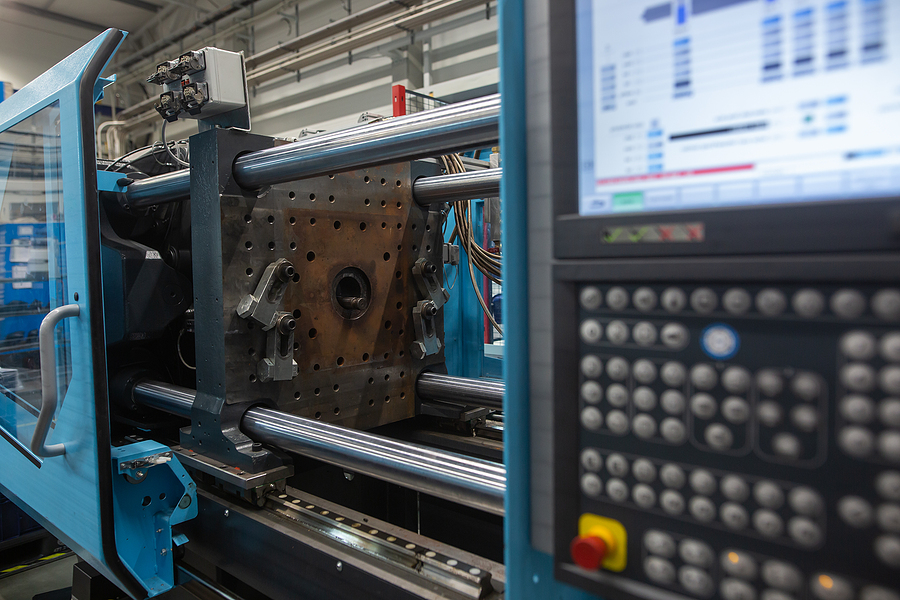Why Consider Injection Molding?
Low costs are always a factor when designing for production. So when weighing the options of whether to produce a product using injection molding over CNC machining, the injection molding process for a product will win out over the long run when considering costs.
After the initial costs of design and tooling, the price per unit manufactured by injection molding drops considerably; it is extremely low.
Injection molding produces less scrap than CNC machining, which equals less cost. Also, in some cases, if the material being used is thermoplastic, the scrap can be recycled into “re-grind” material to be remelted and used again. This is something the CNC machining process cannot do.
Another consideration when it comes to the injection molding process is that each part will be nearly identical. This will be helpful when it comes to consistency and part reliability in a high volume production run.
If injection molding is decided upon as the desired form of product manufacturing, there are different factors that businesses should contemplate if planning on designing and selling a brand-new type of injection-molded product.
Design
According to a National Taipei University of Technology study,
“70% to 80% of the total product cost is determined during the initial stage of product design”.
Design the product with the total production cost in mind.
- Is the product to be manufactured in one piece or multiple pieces? This is an important question because the cost can be reduced if the amount of pieces that comprise the product is reduced, not only in a way of how much material is used and how much tooling is required but, also, by how much assembly is required.
- How much scrap will you generate when manufacturing the product? When designing a mold injection tool for a particular product, consideration must be given to where sprues, runners, and gates will be located in the tool; and whether the tool is going to be a single-cavity, multi-cavity, or family mold layout.
- Sprues are the entry conduits; these guide the flow of molten plastic from the nozzle of the machine into the rest of the injection tool.
- Runners: A channel system connected to the sprue which guides the molten plastic to part cavities in the mold tool.
- Gates are the entry channels to the actual part cavity from the runners.
The plastic that flows in the sprues, runners, and gates are not a part of the product and, therefore, is scrap material to be thrown away. There is a cost associated with scrap material so the idea is to keep this at a minimum.
To know the answers to these questions ahead of time will help determine whether design modifications before mold development will lessen costs by helping to speed up tooling design, accelerate production, and get the product to market sooner.
Manufacturing: Cycle Times vs. High Product Quality
Injection-mold cooling layout lines can provide the scale or balance between fast cycle times or high-quality production. Fast cooling is necessary for economical production, whereas, uniform cooling is necessary for product quality. The layout of cooling lines is important since cooling accounts for two-thirds of an injection molding cycle time.
Production Quantity
Determine the number of parts which need production to break even on the investment considering costs regarding design, testing, production, assembly, marketing, distribution, as well as the consideration of sales price point. Build into this calculation a conservative margin.
This calculation helps in having a low enough volume to not tie up capital in a potential flop, but having a high enough volume for a profitable per-unit production cost.
Contact us for an engineered solution to your brand-new injection molded product.

